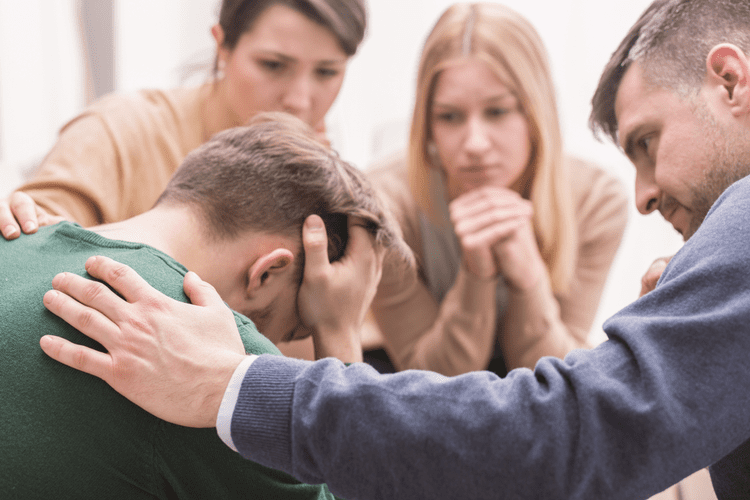Content
Keeping track can help you realize that the alcohol cravings aren’t always there or getting worse. Fortunately, while urges may make you uncomfortable, they can’t hurt you. If you or someone you love is struggling with alcohol addiction, give Find Addiction Rehabs a call today.

Now is the time when you should be looking to quit, but you don’t want to do this cold turkey. It’s imperative to undergo detox in a professional setting, because alcohol withdrawal has the potential to be fatal. Alcohol abuse and addiction doesn’t just affect the person drinking—it affects their families and loved ones, too. Watching a family member struggle with a drinking problem can be as heartbreakingly painful as it is frustrating. But while you can’t do the hard work of overcoming addiction for your loved one, your love and support can play a crucial part in their long-term recovery.
Recovery Coaching
If eaten in moderate amounts, it’ll provide you with high protein, vitamin D and minerals like potassium to keep you full. Nuts are small nutrient powerhouses and a healthy snack for a quick pick-me-up.
There is some evidence that milk thistle aids in the regeneration of liver cells. However, these supplements have not been thoroughly substantiated with scientific research to confirm the efficacy of their actions and benefits. Nonetheless, they are safe to take and may help to alleviate some symptoms of withdrawal and cravings. Prescription medications how to reduce alcohol cravings to help someone stop drinking are Topiramate, Naltrexone, Acamprosate and Antabuse. Additionally, whole grain foods also contain a lot of fiber to keep your digestive system healthy. Alcohol can have detrimental effects on your stomach and intestines, so choosing quality carbs and fiber is crucial for maintaining a healthy gut flora.
Staying Healthy
Addolorato et al., 2002) and a decrease in craving, resulting in a rapid reduction of physical and psychological symptoms. When it comes to addiction treatment and recovery, Bright Future Recovery’s team delivers beyond expectation. If you’re at the point where you constantly have an alcoholic beverage by your side or you can’t make it one day without drinking, it sounds like you’re staring down the barrel of addiction. Alcohol recovery is a process—one that often involves setbacks. A drinking relapse doesn’t mean you’re a failure or that you’ll never be able to reach your goal. Each drinking relapse is an opportunity to learn and recommit to sobriety, so you’ll be less likely to relapse in the future. Your chances of staying sober improve if you are participating in a support group like Alcoholics Anonymous, have a sponsor, or are involved in therapy or an outpatient treatment program.

Content is reviewed before publication and upon substantial updates. External triggers are generally easier to manage than internal triggers. If certain scenarios and places tempt you to drink, the simplest and most effective approach may be to avoid them, at least temporarily. External triggers are things in your environment that make you want to drink alcohol. These triggers can be people, places, or things that make you crave alcohol. Finally, it is important for individuals in recovery from an alcohol use disorder to be able to recognize the generalized signs that a relapse may be on the horizon. Gablofen is a muscle relaxant that has been used to control cravings for alcohol.
Coping and support
Naltrexone, acamprosate, and disulfiram are specifically approved for treating alcohol use disorder. Gabapentin, baclofen, and topiramate are also FDA-approved, but for other conditions. However, research has provided evidence to support their efficacy for treating AUD. Your health care provider or mental health provider will ask additional https://ecosoberhouse.com/ questions based on your responses, symptoms and needs. Preparing and anticipating questions will help you make the most of your appointment time. “I suspect there were some people who, even if they weren’t getting the high from alcohol drinking, the alcohol was still effective in taking away some of those withdrawal symptoms,” he said.

Make a table like the one below, weighing the costs and benefits of drinking to the costs and benefits of quitting. Playing the tape through can help with any type of craving, from a hankering for sweets to a cigarette to pills. If your brain is begging you for a quick fix, play that quick fix out to its longer end. It will remind you that immediate gratification has a downside, which doesn’t align with your new long term goals. Here are some food options to get you started on building a balanced diet for yourself to assist in your success in recovery. By identifying the cues and triggers that make us crave drinking, we can begin to predict, prepare for and act against a large subset of triggers. Realize you don’t have to feel guilty about not drinking or stopping if you’ve reached your limit if your goal is moderation.
How to Stop Alcohol Cravings in the Long-Term
All medications are backed by science, such as peer-reviewed randomized controlled trials with over 10+ years of safety data, and are approved by medical associations such as ASAM and APA . And, once again, medication often works best when combined with a larger support system. Whether that means group meetings, coaching via a telehealth app, or regular therapy sessions, the right combination can help you establish a lasting change.
Why do I want to drink all the time?
Most alcoholics drink to satisfy cravings and avoid alcohol withdrawal symptoms. Once the brain becomes accustomed to the presence of alcohol, the mind believes it needs alcohol to feel pleasure, prompting a compulsive urge, or craving, to drink.